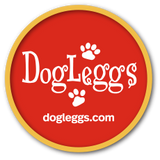11/27/2023
How Do You Treat an Elbow Hygroma in Dogs?
Elbow Hygromas in dogs is a condition characterized by the development of a fluid-filled sac on the side or back of the elbow joint, often due to repeated trauma or pressure. Elbow Hygromas are more frequently seen in larger breeds, like Great Danes, German Shepherds, Labrador Retrievers, Boxers, Mastiffs, and Rottweilers due to their thin skin and minimal subcutaneous fat. Treatment for this ailment should be initiated promptly to prevent complications and discomfort for your dog.
This article’s goal is to provide you with a clear understanding of Elbow Hygroma, enabling you to assist in your dog's speedy recovery. Let's get into the essential steps for treating Elbow Hygroma and expedite your dog's path to improved health.
How Do Dogs Get Elbow Hygroma?
Elbow Hygroma in dogs, also referred to as Elbow Seroma or Olecranon Bursitis, generally develops over time from recurrent trauma and pressure placed on the elbow joint. Here's how it develops:
- Repetitive Pressure: Repeated pressure or friction on the dog's elbow joint is the most common way they develop elbow hygroma. Often hard to avoid, this repeated pressure can be the result of everyday leisure activities, like your dog lounging on your hardwood floors, tile, or concrete. Any dog owner knows that most dogs love a cold surface.
- Weight and Size: Larger and heavier dog breeds are more prone to developing Elbow Hygromas since they exert more force on their elbows when lying down. These larger breeds at higher risk also tend to have thin skin and less subcutaneous fat.
- Improper Bedding: Make sure your pet has a comfortable, well-padded bed since inadequate or hard bedding can contribute to the development of hygromas. Larger dogs can struggle to find comfortable positions to relieve pressure on their elbows.
- Inactivity: Dogs that are less active and spend a lot of time lying down are more susceptible to Elbow Hygromas. Make sure you keep your dog active if possible and you may be able to decrease the onset of hygromas.
- Age and Health: Older dogs or those with pre-existing medical conditions that limit their mobility such as arthritis of the hips may be more prone to developing Elbow Hygromas. Try to make their resting areas as comfortable (and padded) as possible.
- Genetics: As mentioned, these larger dogs are just genetically predisposed to developing elbow hygromas.
The repeated pressure on the elbow joint leads to irritation and inflammation of the tissues around the joint. In response, the dog's body forms a hygroma as a protective mechanism to the pressure. This sac is the body’s way of cushioning the joint and an attempt to reduce further damage. If the pressure and trauma continue, the hygroma can become larger and more problematic and more painful for your pet.
Dog Elbow Hygroma Treatment
If you think that your dog has an Elbow Hygroma, it’s essential to consult with a veterinarian for a proper diagnosis and a proper treatment plan. The vet will be able to assess the size, location, and severity of the hygroma as well as any contributing arthritic conditions. If there's an infection associated with the hygroma, your veterinarian may prescribe antibiotics. Non-steroidal anti-inflammatory drugs (NSAIDs) may be prescribed to reduce inflammation and pain associated with the hygroma at the recommendation of your trusted veterinarian.
In some cases, your vet may recommend bandaging the affected elbow to protect it from further trauma and encourage the hygroma to heal. Using the proper bandaging can make all the difference. If you can, address the underlying cause of the hygroma by eliminating or minimizing the pressure or trauma that led to its development. Supportive bedding can help distribute your dog’s weight evenly. The Adjustable DogLeggs will protect those bandages from mud and muck. In most cases the added padding they have makes bandaging unnecessary.
Canine Rehabilitation (Like human Physical Therapy) and massage may help improve blood circulation, reduce inflammation, reduce pain, and promote healing. A veterinary rehabilitation therapist can guide you in these techniques should this be an option for your dog.
Specialized elbow pads or protective sleeves can be used to protect the affected area and prevent further injury. It’s important to understand the products that are available and how they can help with your dog’s treatment.
In severe cases or when conservative treatments are ineffective, surgical intervention may be necessary. Surgical options include removing the hygroma sac, skin grafting, or other procedures to promote healing and reduce the risk of recurrence. Your trusted veterinarian can help you assess the situation to see if surgery makes the most sense for your pet.
Continued follow-up with your veterinarian is vital to monitor treatment progress, adjust treatment, and confirm proper healing of elbow hygromas. Keep in mind that outcomes vary based on size and severity. Early intervention, preventing further trauma, and ongoing care are crucial for successful management. Consult your vet for a personalized treatment plan.
How Can DogLegg’s Help in Your Treatment Plan?
DogLeggs’ is committed to elevating the standard of care and enhancing the well-being of companion animals. Our products are leading a transformative shift in the companion pet industry, offering pet owners and veterinarians innovative, user-friendly solutions that serve as an excellent alternative to traditional bandaging methods. Since our inception, we take immense pride in crafting all DogLeggs' products right here in the USA, using top-quality materials and the utmost attention to detail. This ensures every customer achieves the best outcomes for their beloved pets.
Contact us today to learn more about our products and how we can support your pet’s well-being, one step at a time.


